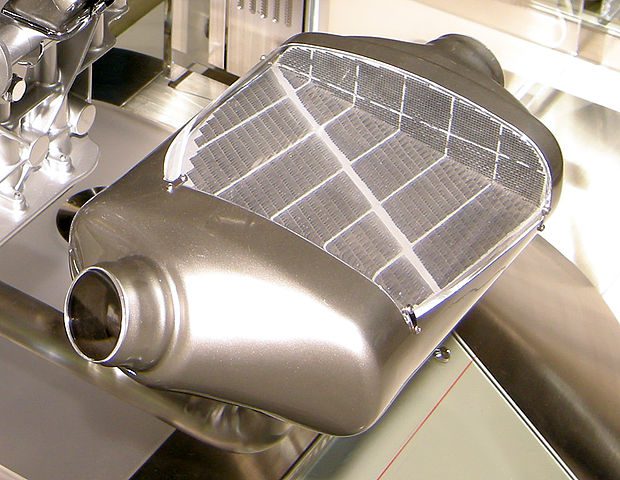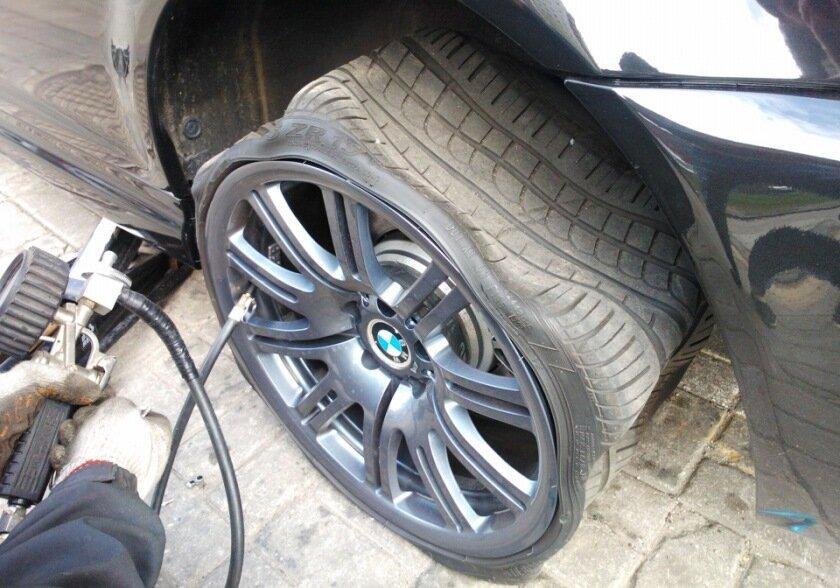
P2003 Diesel Particulate Filter Efficiency Below B2 Threshold
Content
P2003 Diesel Particulate Filter Efficiency Below B2 Threshold
OBD-II DTC Datasheet
Diesel Particulate Filter Efficiency Below Threshold Bank 2
What does this mean?
This Diagnostic Trouble Code (DTC) is a generic transmission code. It is considered universal as it applies to all makes and models of vehicles (1996 and newer), although the specific repair steps may differ slightly depending on the model.
The DTC refers to an emission control device called a particulate filter. Installed on 2007 and later diesels, it eliminates soot from their exhaust gases. You will most likely see this DTC on Dodge, Ford, Chevrolet or GMC diesel pickups, but it can also work on other diesel vehicles like VW, Vauxhall, Audi, Lexus, etc.
DPF - diesel particulate filter - takes the form of a catalytic converter and is located in the exhaust system. Inside is a matrix of passage-covering compounds such as cordierite, silicon carbide, and metal fibers. The soot removal efficiency is 98%.
Cutaway photo of the particulate filter (DPF): 
The DPF creates a slight back pressure during operation. The car's ECU - a computer - has pressure feedback sensors on the particulate filter to control its operation. If for any reason - for two work cycles - it detects a discrepancy within the pressure range, it sets code P2003 indicating a fault.
Don't worry, these devices have the regenerative ability to burn off accumulated soot and get back to normal work. They last a long time.
Once this happens, the lights will turn off and the code will clear. That's why it's called a program code - it indicates a fault in "real time" and clears it as the fault is fixed. The hard code remains until the repair is completed and the code is removed manually using a scanner.
All vehicles require a device to remove nitrogen oxides that are emitted into the atmosphere, which would otherwise not be present and which are harmful to your health and also to the atmosphere. The catalytic converter reduces emissions from gasoline engines. On the other hand, diesels are more problematic.
Since the heat of supercompressed fuel is used for spontaneous combustion, the temperature in the cylinder heads is very high, which creates a serious breeding ground for nitrogen oxides. NOx is formed at extremely high temperatures. Engineers knew they needed to use EGR - Exhaust Gas Recirculation - to dilute the incoming fuel to lower head temperatures and reduce NOx emissions. The problem was that the diesel exhaust temperature was too high and just made the problem worse.
They fixed this by using engine coolant to cool the engine oil and an EGR pipe to keep the cylinder head temperature below that required for NOx to form. It worked pretty well. DPF is the last line of defense against emissions by eliminating soot.
NOTE. This DTC P2003 is the same as P2002, but P2003 refers to bank 2, which is the side of the engine that does not have cylinder # 1.
symptoms
Symptoms of a P2003 trouble code may include:
- A drop in fuel economy occurs when the engine management system tries to raise the temperature of the exhaust gases in order to burn off excess soot in the DPF.
- The check engine light with code P2003 will illuminate. The light may remain on or intermittently illuminated during DPF regeneration. The engine will be sluggish when accelerating.
- The engine oil will exhibit dilution due to the ECMs attempting to raise the engine temperature. Some cars are slightly ahead of the timing of the fuel injection after the top center section to burn a small amount of fuel to raise the temperature of the exhaust gases. Some of this fuel enters the crankcase. When the ECM determines the need for DPF regeneration, the oil life is significantly reduced.
- If the DPF is not cleared, the ECU will return to “Limp Home Mode” until the situation is corrected.
Possible reasons
Reasons for this DTC may include:
- This code will cause too much slow speed. To burn the soot in the DPF requires heat in the range of 500 ° C to 600 ° C. Even with the ECU's efforts to control the engine, it is difficult for it to generate enough heat to clean the DPF at low engine speeds.
- An air leak in front of the DPF will change the sensor reading, resulting in a code
- Faulty strategies or ECU components prevent proper regeneration.
- Fuel with a high sulfur content quickly clogs the DPF
- Some aftermarket accessories and performance modifications
- Dirty air filter element
- Damaged DPF
Diagnostic steps and possible solutions
The solutions are somewhat limited as the DPF is not defective, but only temporarily clogged with soot particles. If the light is on and a P2003 code is set, follow the troubleshooting process starting with a visual inspection.
Inspect the DPF on block # 2 for any loose connections on the engine side where it attaches to the exhaust pipe.
Inspect the DPF front and rear differential pressure transducers (block 2). Look for burnt wires, loose or corroded connectors. Disconnect the connectors and look for bent or corroded pins. Make sure the sensor wires are not touching the DPF. Start the loader and look for leaks on or around the machine.
If all is well with the above steps, drive the truck for approximately 30 minutes at highway speeds to raise the exhaust gas temperature high enough to regenerate the DPF. Personally, I have found that idling the engine at 1400 rpm for about 20 minutes gives the same results.
If the problem still persists after driving at highway speeds, it is best to take it to a store and ask them to put it on a diagnostic computer like Tech II. It is not expensive and they can monitor sensors and ECUs in real time. They can see signals from sensors and check if the ECU is actually trying to regenerate. The bad part comes to light quickly.
If you mainly drive around town and this is a recurring problem, there is another solution. Most stores can reprogram your computer to prevent the regeneration process in a few seconds. Then delete the PDF and replace it with a straight pipe (if allowed in your jurisdiction). The problem has been solved. Don't throw away the DPF though, it costs a lot of money if you sell it or need it in the future.
NOTE. Certain modifications such as "cold air intake" (CAI) kits or exhaust kits may trigger this code and may also affect the manufacturer's warranty. If you have such a modification and this code, put the replacement part back in place and see if the code disappears. Or try contacting the kit manufacturer for advice to see if this is a known issue.
Related DTC discussions
- Error code P2003 for Nissan Altima 2007 3.5Mine is a nissan altima 2007 3.5 SE. He showed the engine service sign and when I spoke to the mechanic he came up with a P2003 error. But he says it's strange to get that code for a petrol car. I need help to find out what it is. 🙄: roll:…
Need more help with your p2003 code?
If you still need help with DTC P2003, post a question in the comments below this article.
NOTE. This information is provided for informational purposes only. It is not intended to be used as a repair recommendation and we are not responsible for any action you take on any vehicle. All information on this site is protected by copyright.


2 comment
The troubel shooter
Please provide me step by step procedure for DIAGNOSING P200300 in hyundai venue
I think Hyundai tuscon P2003
good day, problem on Hyundai tuscon 2,0 2016 year, error code P2003 still persists even after all options. thank you Judith